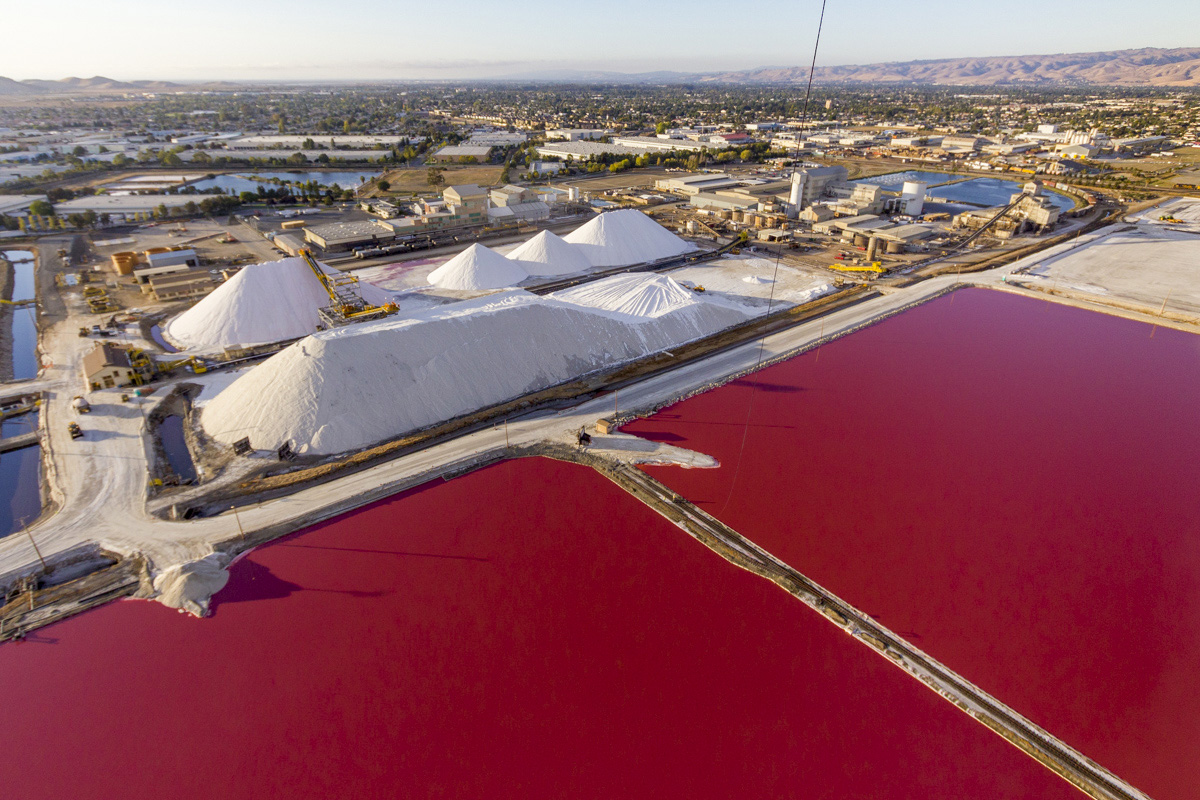The Most Common Question: What Is Up with Those Crazy Colors Around the Edges of the Bay?!?
In my job as Executive Project Manager of the South Bay Salt Pond Restoration Project, I do a lot of media interviews, public appearances, presentations to elected officials, and site tours with groups of students and other interested groups. I also meet a lot of people socially. In those settings, the “what do you do?” question comes up a lot. I then get to try to explain what the South Bay Salt Pond Restoration Project is and what work I do on it.
The most common question I get as part of either of those two scenarios is “What is up with those crazy colors around the edges of the Bay?!?”
If you already know the answer to this, feel free to click over to this link on our project website and see a very awesome but somewhat low-res video of a 2005 breach event featuring KTVU’s Dennis Richmond and a less seasoned version of John Krause, manager of the California Department of Fish and Wildlife’s Eden Landing Ecological Reserve. If you don’t know the answer, keep reading…
When lots of salt was being made along the edges of San Francisco Bay, they did it by sectioning off little bits of the bay into one pond or cell, evaporating some of the water, making it a little more salty, then shunting that water into the next pond, where a little more water evaporated, making it a little more salty still, and then repeating those steps through a series of ponds of ever-increasing salinity until what remained was essentially harvestable salt. What the salt-makers had was a metaphorical assembly line of more and more concentrated salt water.
That’s an oversimplification, but it’s basically how it worked. And it turns out that different types of aquatic microbes, algae, and invertebrates can grow and thrive in different salinities. AND it also turns out that these different organisms have their own colors, some of which are pretty remarkably rare in nature. So when we are flying into one of the Bay Area’s airports¹, we look down and see all kinds of crazy colors, and what we are mostly seeing is what kind of microbes grow in different salinities.
At the end of that chain, the dry salt flats, called pannes, are bright white because salt is white. But the reds, pinks, and oranges are areas that are still in salt production. Salt-making company Cargill still makes a lot of salt at its Newark facility, and on a clear day, you can see the salt pile from a great distance. The bright green areas are ponds that are either still in production but only a little saltier than the Bay, or that are planned for restoration that we just haven’t gotten to yet.
So, there you go. For more beautiful photos of the crazy colors of the marshes, sloughs, ponds and pannes, check out Cris Benton’s kite aerial photography here.
- My favorite is OAK because of its proximity to my house, understated chic, and satellite location of Heinhold’s First and Last Chance Saloon. Not necessarily in that order.


